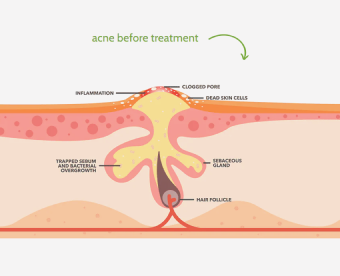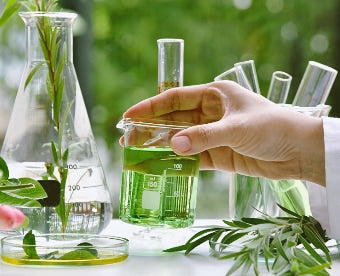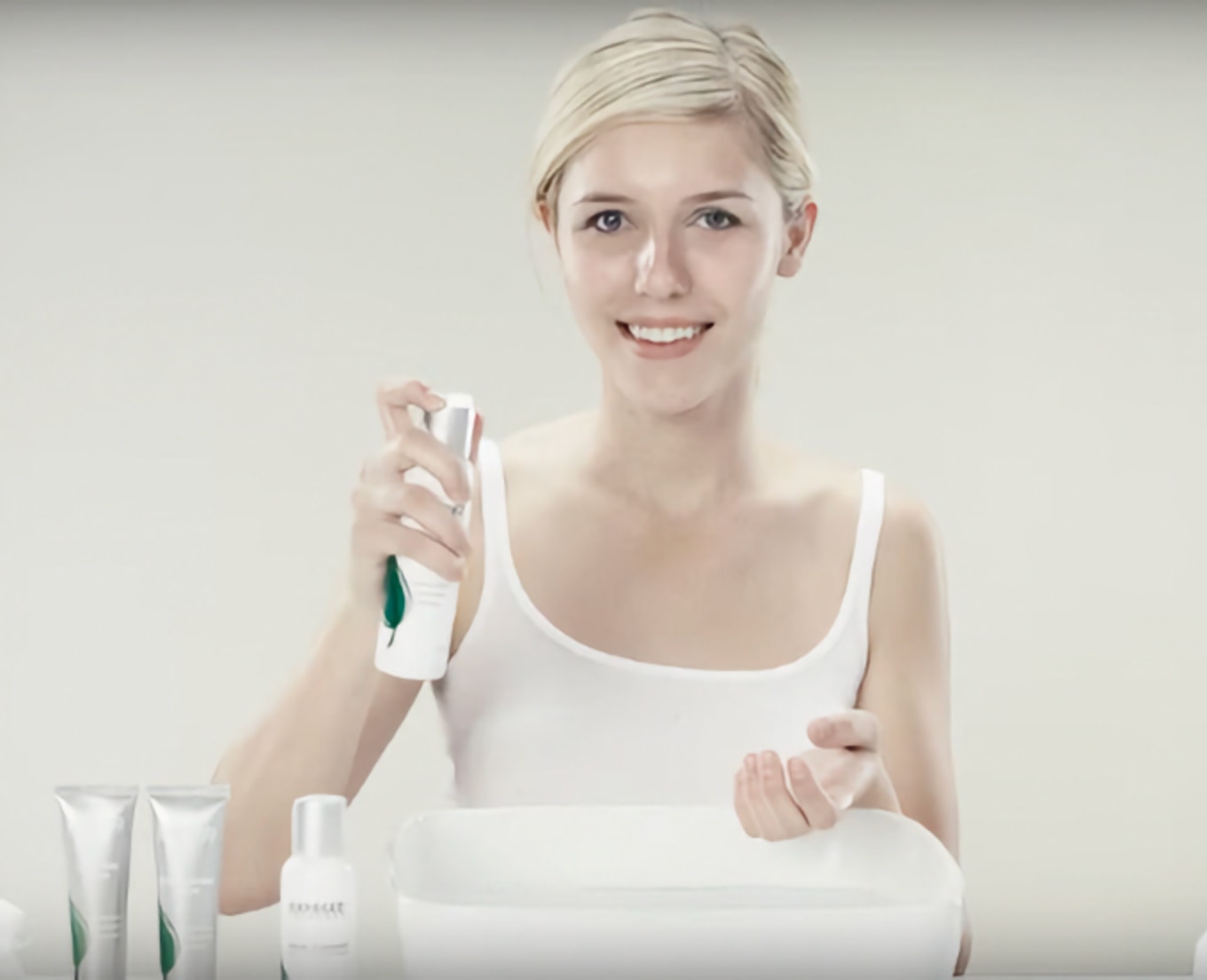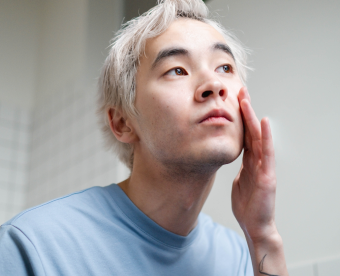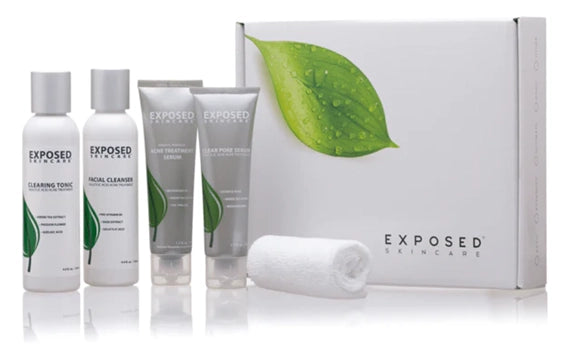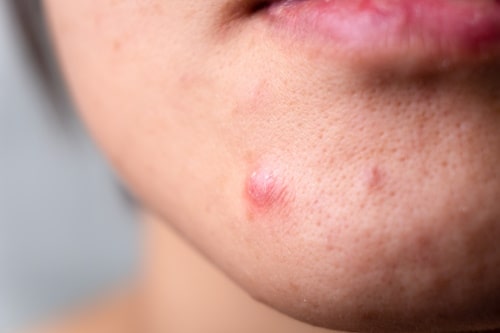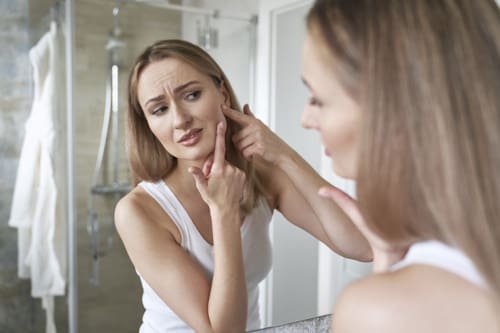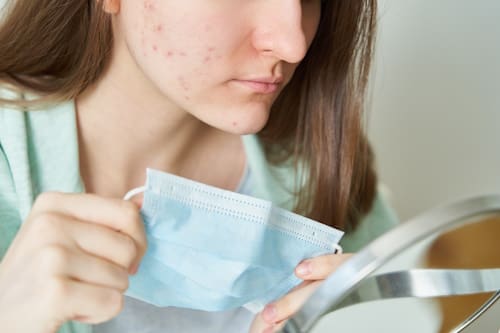Everyone has experienced that abrupt breakout that instantly prompts a frantic search for quick and efficient solutions. This is often accompanied by a sea of questions: What caused this? How can I treat it?
Specifically, dealing with red acne on face has become a common skin condition, raising numerous concerns due to its stubborn nature. This comprehensive guide explores the types of inflammatory acne, its causes, and some of the best treatments aimed at achieving a clear, radiant complexion.
Also read: How to choose the best acne treatment
Biggest Take-Aways:
-
Acne, including red acne on the face, is a common skin condition caused by clogged pores due to excess oil and dead skin cells, hormonal changes, and various other factors. It can range from mild forms like whiteheads and blackheads to more severe forms like nodules and cysts.
-
The best ways to manage acne include understanding its root causes, practicing preventive measures such as regular cleansing and maintaining a healthy diet, and using effective treatments. Topical treatments and over-the-counter solutions can help in reducing and managing acne.
-
Be patient and consistent with any treatment plan you follow for acne, as results may take some time to appear. Understanding that there's no 'one size fits all' solution for acne is important, and what works for one person may not work for another.
-
Exposed Skin Care is a comprehensive and effective solution for treating acne. It is designed to handle all types of acne, from common pimples to severe conditions like cystic acne and rosacea, offering both treatment for existing acne and prevention for future breakouts.

Decoding the Different Types of Acne
Acne vulgaris is a common skin condition that primarily affects teenagers but can also appear at any age. The condition is categorized into two main types, non-inflammatory acne (whiteheads and blackheads) and inflammatory acne (pustules, papules, nodules, and cysts). Let's take a closer look.
Whiteheads and Blackheads
Whiteheads and blackheads, often seen as mild acne, are typically the result of pores clogged with excess oil and dead skin cells. They remain small and don't cause inflammation or redness.
- Whiteheads: When a pore gets clogged by oil and skin cells and closes up, it results in a whitehead.
- Blackheads: If the pore remains open, it results in a blackhead. The black color isn't dirt but a reaction of oil to air.
Inflammatory Acne
Inflammatory acne, including pustules, papules, nodules, and cysts, is more severe and characterized by redness and swelling.
- Papules: When the walls surrounding your pores break down due to severe inflammation, you get a papule. They are hard to the touch, pink, and can be sensitive.
- Pustules: These are your typical pimples. They occur when the walls around your pore break down, leading to a growth filled with pus.
- Nodules and Cysts: These are severe forms of acne that occur when clogs occur deep within the skin. They're usually painful and filled with pus.

Unraveling the Causes Behind Red Acne on Face
Red acne, a type of inflammatory acne, is more common than one might think. Understanding its causes can help in management and treatment. The symptoms and causes often intertwine, leading to redness from acne.
Blocked Follicles and Acne
Acne can affect anyone. It occurs when oil and dead skin cells clog pores, forming a 'plug'. When the follicle becomes inflamed and infected with bacteria, it results in a breakout. Overproduction of oil and accumulation of dead skin cells worsen acne.
Hormonal Influence and Acne
Acne tends to flare up during hormonal changes, such as puberty or menstruation, where excess oil production is prevalent. This type of acne is more likely to become inflamed.
Other Factors that Contribute to Acne
- Diet: Some studies suggest that certain dietary factors, like skim milk and carbohydrate-rich foods, can worsen your acne.
- Medication: Certain medications can cause or worsen acne.
- Stress: While not a direct cause, stress can indeed exacerbate acne.

Therapeutic Measures to Combat Red Acne on Face
Now that we've explored what causes acne let's delve into how to treat it. Although it can be hard to get rid of, various methods can help reduce acne, ultimately leading to clearer skin.
Topical Treatments
One of the first lines of defense against acne is topical treatments, which include creams, gels, and lotions applied directly to the affected skin.
- Benzoyl Peroxide: This topical treatment is effective for both mild and moderate acne. It works by killing bacteria that infect pores and reduces inflammation.
- Salicylic Acid: This is an excellent choice for treating whiteheads and blackheads. It helps to unclog pores and prevents the formation of future blemishes.
- Retinoids: Derived from vitamin A, retinoids increase cell turnover and reduce the stickiness of cells in the follicles. They can also help reduce the inflammation that leads to acne.
- Azelaic Acid: This can help reduce acne by killing the bacteria that infect pores and decrease the production of keratin, a natural substance that promotes the growth of acne bacteria.
Over-the-Counter (OTC) Treatments
OTC treatments can be an excellent place to start treatment, especially for mild to moderate acne.
- Cleansers: A good cleanser can help remove excess oil and dead skin. Washing your face twice a day is recommended.
- Spot Treatments: These products are applied to individual pimples instead of the entire face. They can help to reduce redness from acne and prevent further breakouts.

- Pore Strips: These can help remove blackheads by pulling out the clog in the pore.
Preventive Measures to Keep Red Acne at Bay
While understanding the causes and treatments for acne is crucial, knowing how to prevent acne is equally important. Here are some measures that can help you maintain clearer skin:
- Regular Cleansing: Washing your face twice daily with a gentle cleanser can help remove excess oil and dead skin cells, preventing them from clogging the pores.
- Stay Hydrated: Drinking plenty of water can help keep your skin hydrated and may reduce the risk of acne.
- Use Sunscreen: Exposure to the sun can darken acne scars and spots. Make sure to use sunscreen whenever you're out in the sun.
- Maintain a Healthy Diet: A diet rich in fruits, vegetables, lean proteins, and whole grains promotes healthy skin and can help prevent acne.
Exposed Skin Care: An Effective Solution for Acne Management
Exposed Skin Care is an innovative acne product line designed to treat acne and related skin conditions. It offers a comprehensive solution for those who experience acne, ranging from common pimples to more severe forms like cystic acne and rosacea.
Here are some of the benefits of Exposed Skin Care products:
-
Versatility in Treatment: It's adept at dealing with all types of pimples and blemishes. Whether you're dealing with inflamed pimples, red spots, or dark spots from previous breakouts, this line of products can help.
-
Synergistic Action: The products work synergistically to treat acne and also reduce acne redness, providing a soothing effect on your skin.
-
Addressing Severe Acne: Exposed Skin Care is formulated to tackle moderate to severe acne. The unique blend of ingredients ensures that acne lesions are effectively addressed, whether they cover a large area or are scattered spots.
-
Scar and Blemish Lightening: This line of products is even beneficial for people with acne, resulting in blemishes and scars. It aids in lightening dark spots and promotes healthier-looking skin.
-
Prevention of Future Breakouts: Exposed Skin Care doesn't just treat existing acne; it also works to prevent future breakouts. This preemptive action is beneficial for those who frequently get acne.
Overall, the benefits of using Exposed Skin Care make it an excellent choice for anyone looking to manage their acne effectively and achieve a clearer complexion.
Conclusion
Red acne on the face is a common skin condition that affects many individuals worldwide. Acne can cause various blemishes on the skin, from red and inflamed spots to darker acne scars. This can be distressing and can impact one's self-esteem. Thankfully, understanding the causes, learning how to treat the condition, and finding reliable acne products, like Exposed Skin Care, are essential steps toward achieving clearer skin.
Exposed Skin Care is an excellent solution designed to address the various types of blemishes that acne can cause. These products can help those who experience acne, from common pimples to more severe forms like cystic acne and rosacea.
Remember, while acne is a skin condition that causes various skin issues, it can also be an opportunity to learn more about your skin and the best ways to care for it. With an effective skincare routine and the right treatment approach, clear skin is attainable.
Frequently Asked Questions
Q1: Can I pop my pimples?
No, popping your pimples can lead to scarring and infection.
Q2: How long does it take for acne treatments to work?
Most acne treatments take 4 to 8 weeks to see noticeable results.
Q3: Does stress cause acne?
While stress doesn't directly cause acne, it can exacerbate breakouts.
Q4: Can diet affect my acne?
Yes, some studies suggest that certain foods can contribute to acne.
Q5: Is acne only a teenage problem?
No, acne can affect individuals at any age.

